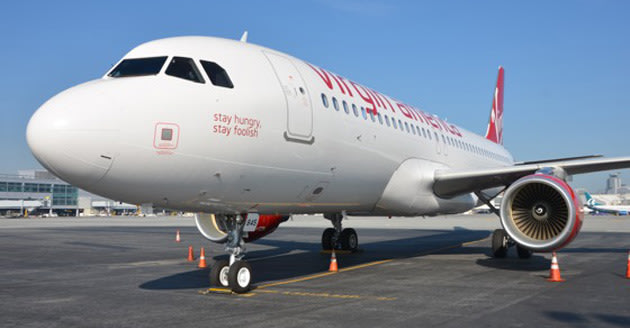WASHINGTON (Reuters) ? The U.S. economy grew at its fastest pace in 1-1/2 years in the fourth quarter of 2011, but a strong rebuilding of stocks by businesses and a slower pace of spending on capital goods hinted at softer growth early this year.
U.S. gross domestic product expanded at a 2.8 percent annual rate, the Commerce Department said on Friday, a sharp acceleration from the 1.8 percent clip of the prior three months and the quickest pace since the second quarter of 2010.
It was, however, a touch below economists' expectations in a Reuters poll for a 3 percent rate, and nearly 2 percentage points was due to the build-up in business inventories.
The report supported the Federal Reserve's ultra easy monetary policy stance to nurse the recovery.
"This seems consistent with the Fed's view that the U.S. economy is going to need all the help it can get to hit escape velocity in the next couple years," said David Watt, a senior currency strategist, RBC Capital, Toronto
U.S. stock index futures turned negative after the data, while government debt prices pared losses. The euro held gains against the dollar.
Growth in the fourth quarter got a temporary boost from the rebuilding of business inventories, which was the fastest since the third quarter of 2010, after they declined in the third-quarter for the first time since late 2009.
Inventories increased $56.0 billion, adding 1.94 percentage points to GDP growth. Excluding inventories, the economy grew at a tepid 0.8 percent rate, a sharp step-down from the prior period's 3.2 percent pace.
The robust stock accumulation suggests the recovery will lose a step in early 2012.
Also pointing to slower growth, business spending on capital goods was the slowest since 2009, a sign the debt crisis in Europe was starting to take its toll.
Expectations of soft growth led the Fed on Wednesday to say it expected to keep interest rates at rock bottom levels at least through late 2014.
Fed Chairman Ben Bernanke said the central bank, which forecast growth this year in a 2.2 percent to 2.7 percent range, was mulling further asset purchases to speed up the recovery.
The Fed warned the economy still faced big risks, a suggestion the euro zone debt crisis could still hit hard.
The economy grew 1.7 percent in 2011 after expanding 3 percent the prior year.
"The Fed is attempting to shield the economy from a potentially more severe recession in Europe," said Ryan Sweet, a senior economist at Moody's Analytics in West Chester, Pennsylvania.
"Even though the economy improved last quarter there are a number of headwinds and a lot of uncertainty surrounding Europe, emerging markets and also U.S. fiscal policy."
Treasury Secretary Timothy Geithner told the World Economic Forum in Davos the U.S. economy still faced big challenges.
"We're still repairing the damage done by the financial crisis. On top of that we face a more challenging world. We have a lot of challenges ahead in the United States," Geithner said.
Consumer spending, which accounts for about 70 percent of U.S. economic activity, stepped up to a 2 percent rate from the third-quarter's 1.7 percent pace - largely driven by pent-up demand for motor vehicles.
The Japanese earthquake and tsunami had disrupted supplies early in the year, leaving showrooms bereft of popular models.
Spending was also lifted by moderate inflation.
A price index for personal spending rose at a 0.7 percent rate in the fourth-quarter, the slowest increase in 1-1/2 years, after rising at a 2.3 percent pace in the July-September period.
A core inflation measure, which strips out food and energy costs, increased at a 1.1 percent rate after rising 2.1 percent in the third quarter.
The increase last quarter was the smallest in a year and put this measure well below the Fed's 2 percent target.
SLUGGISH INCOME GROWTH
Sluggish income growth amid an 8.5 percent unemployment rate, which has prompted households to tap savings and credit cards to fund their purchases, is expected to weigh on consumers as the new year unfolds.
The saving rate was 3.7 percent in the fourth quarter, slowing from the prior period's 3.9 percent.
"Though the unemployment rate has improved, the jobs market remains a major challenge. Part of the decline in the unemployment rate is due to the fact that ... people have stopped looking for work," said Adolfo Laurenti, deputy chief economist at Mesirow Financial in Chicago.
"The high level of people out of the workforce and underemployed people show there isn't really much income generation to contribute to a better spending pattern."
About 23.7 million Americans are either out of work or underemployed.
The shrinking labor force suggests the economy's long-term growth potential has slipped below 2.5 percent.
A sustained growth pace of at least 3 percent would likely be needed to make noticeable headway in absorbing the unemployed and those who have given up the search for work.
Business spending grew at a sluggish 1.7 percent rate, pulling back sharply from the third-quarter's 15.7 percent pace.
Though exports held up despite slowing global demand, an increase in imports left a trade gap that sliced off 0.11 percentage point from GDP growth.
Despite an anticipated slowdown in growth this year, analysts do not believe the economy will fall into recession.
"The United States has enough momentum to offset the losses coming from Europe," said Laurenti.
Unseasonably mild winter weather helped home construction post its fastest growth pace since the second quarter of 2010, with much of the increase going to meet rising demand for rental apartments.
Spending on nonresidential structures fell. Government spending shrank for a fifth consecutive quarter, reflecting a large decline in defense and still weak state and local government outlays.
(Reporting by Lucia Mutikani; editing by Neil Stempleman)
Source: http://us.rd.yahoo.com/dailynews/rss/economy/*http%3A//news.yahoo.com/s/nm/20120127/bs_nm/us_usa_economy
weather radar deplorable mls draft khloe kardashian mark davis marine urination video hostess




